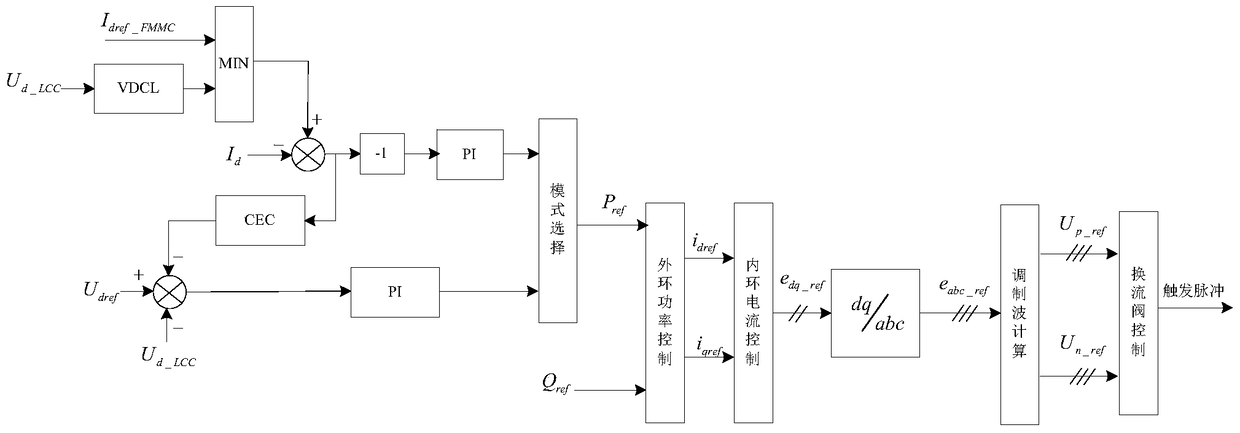Sending-end low voltage fault ride-through method for hybrid HVDC transmission system
A low-voltage fault and DC voltage technology, applied in the direction of power transmission AC network, can solve problems such as cut-off, achieve the effect of reducing power loss at the receiving end, reducing the DC voltage at the receiving end, and preventing DC cut-off
- Summary
- Abstract
- Description
- Claims
- Application Information
AI Technical Summary
Problems solved by technology
Method used
Image
Examples
Embodiment Construction
[0017] The present invention will be described in further detail below in conjunction with the accompanying drawings and embodiments.
[0018] Send-end low-voltage fault ride-through method of hybrid direct current transmission system, such as figure 1 As shown, in this embodiment, the main circuit of the hybrid DC power transmission designed by implementing this method is mainly composed of a sending end and a receiving end, the sending end is composed of a grid commutated converter (LLC), and the receiving end is composed of a full-bridge modular multi-level Composed of a converter (FMMC), the LLC and FMMC are connected by a DC line, and an AC filter (ACF) and a DC filter (DCF) are arranged at the sending end; there are also two smoothing reactors in the circuit , which are respectively connected to the DC lines close to the LCC and FMMC to suppress DC current fluctuations. In summary, the circuit of this embodiment is a hybrid direct current transmission system.
[0019] ...
PUM
 Login to View More
Login to View More Abstract
Description
Claims
Application Information
 Login to View More
Login to View More - R&D
- Intellectual Property
- Life Sciences
- Materials
- Tech Scout
- Unparalleled Data Quality
- Higher Quality Content
- 60% Fewer Hallucinations
Browse by: Latest US Patents, China's latest patents, Technical Efficacy Thesaurus, Application Domain, Technology Topic, Popular Technical Reports.
© 2025 PatSnap. All rights reserved.Legal|Privacy policy|Modern Slavery Act Transparency Statement|Sitemap|About US| Contact US: help@patsnap.com



